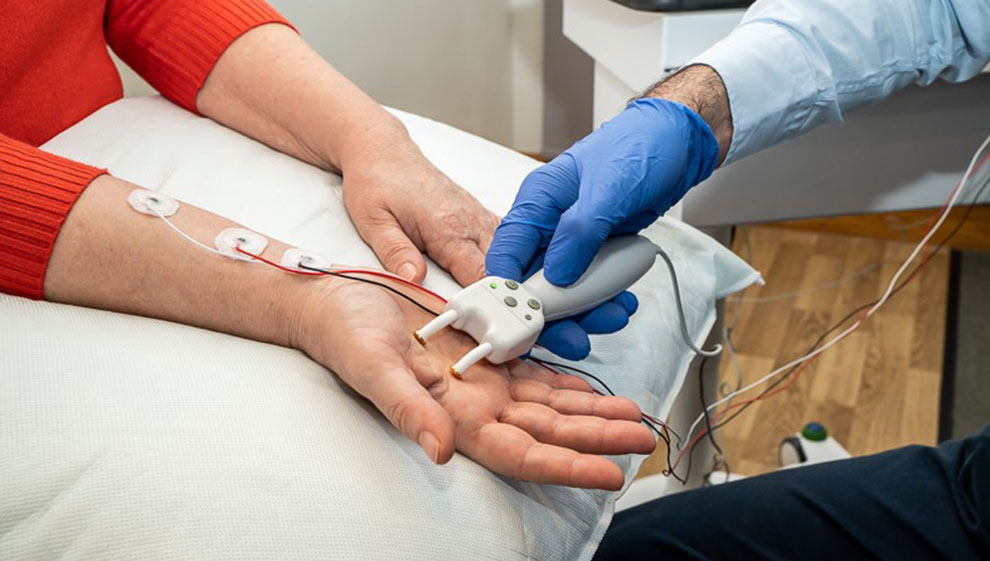Electromyography (EMG) at Highgate Hospital
- Overview
Or call us on
An electromyography is a test to measure your muscle activity at rest and during use.
It may be performed after a nerve conduction study to diagnose and treat conditions such as carpal tunnel syndrome, nerve injury or sciatica.
What happens during an electromyography?
An electromyography takes 30-60 minutes. It is usually performed as an outpatient meaning you can go home the day of the test.
Be sure and wear loose clothing so that you can move and engage any muscles that are being tested.
You will lie down or sit in a chair, depending on the area being tested. It is important to relax any muscles so that the activity levels can be measured both in a relaxed state and when the muscle is engaged.

A thin electrode needle will be inserted into the muscle. The electrode is attached by a wire to a machine. The technician will ask you to engage (contract or tighten) the muscle. The electrical activity is recorded by the machine.
They may need to move the electrode several times to ensure the activity is accurately recorded.
When the test is done, any electrodes are removed and the area will be cleaned. The insertion area may be slightly sore. You may feel a numbness or slight tingling in your muscles for 1-2 hours after the test. Be sure and let us know if you have any swelling or increased pain.
The technician may be able to tell you the results of the test before you leave. A complete report on your EMG will be sent to the consultant that ordered the test.
17-19 View Road, Highgate, London, N6 4DJ
Ways to pay
Nuffield Health promise
Our prices are all-inclusive. We will equal any comparable price. There are no time limits on your aftercare.
Paying for yourself
There are no hidden costs in our treatment prices. The price you see is the price you pay.
Find out morePersonal medical loan
Spread the cost of your treatment with a 6, 10 or 12 month 0% personal medical loan.
Find out moreMedical insurance
We work with you and your insurance provider to get you the treatment you need quickly
Find out moreContact Highgate Hospital
